7 Best Herbal Tinctures For Fatigue
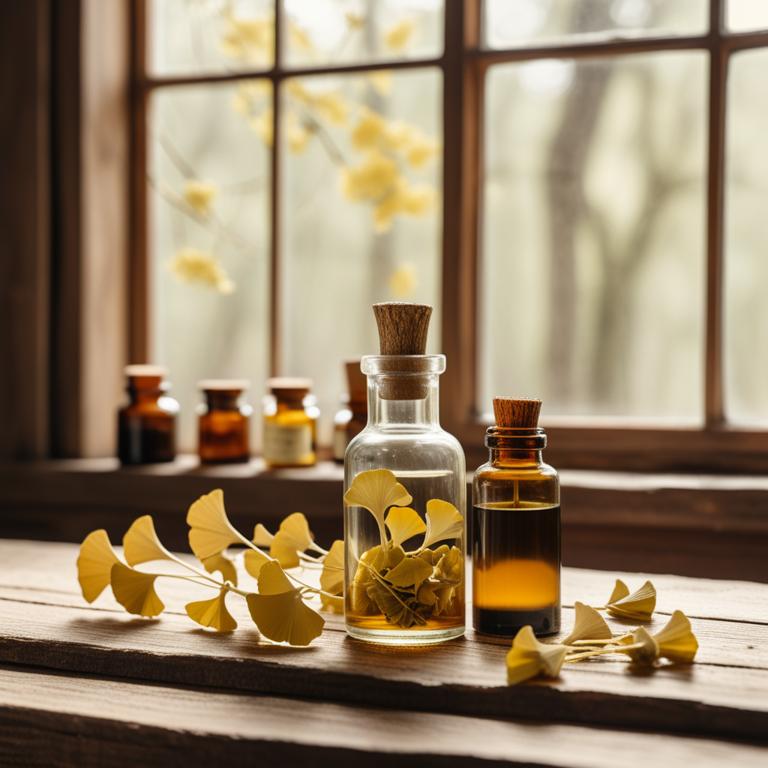
Herbal tinctures for Fatigue are concentrated liquid extracts made from herbs, roots, and flowers, often used in alternative medicine to alleviate symptoms of physical and mental exhaustion.
These tinctures offer several benefits, including improved energy levels, reduced stress, and enhanced mental clarity, making them a popular choice for individuals suffering from fatigue.
Examples of herbal tinctures that can help treat fatigue include Ginkgo biloba, which improves blood flow and oxygenation to the brain, Ashwagandha, which reduces stress and anxiety, and Ginseng, which boosts energy and vitality.
Other herbal tinctures, such as Rhodiola, St. John's Wort, and Licorice root, are also commonly used to treat fatigue due to their adaptogenic properties, which help the body adapt to stress and promote balance in the body's energy systems.
According to "Complementary therapies in medicine", tinctures for fatigue may be beneficial, as a study on Myelophil, an extract of Astragali Radix and Salviae Radix, found that it significantly decreased fatigue severity scores in adults with chronic fatigue when administered at a dose of 3g per day.
Below there's a list of the 7 best herbal tinctures for fatigue.
- 1. Ginkgo biloba tinctures
- 2. Panax ginseng tinctures
- 3. Schisandra chinensis tinctures
- 4. Astragalus membranaceus tinctures
- 5. Panax quinquefolius tinctures
- 6. Eleutherococcus senticosus tinctures
- 7. Acacia concinna tinctures
Also you may be interested in...
TODAY'S FREE BOUNDLE
Herb Drying Checklist + Herbal Tea Shopping List + Medicinal Herbs Flashcards
Enter you best email address below to receive this bundle (3 product valued $19.95) for FREE + exclusive access to The Aphotecary Letter.
$19.95 -> $0.00
1. Ginkgo biloba tinctures

Ginkgo biloba tinctures have been widely used to treat fatigue, a common ailment characterized by a persistent feeling of tiredness and lack of energy.
The properties of Ginkgo biloba tinctures that help to treat fatigue include its ability to improve blood circulation and oxygenation to the brain, thereby enhancing cognitive function and reducing mental fatigue.
The bioactive constituents of Ginkgo biloba tinctures, such as flavonoids and terpenoids, particularly bilobalide and ginkgolides, play a crucial role in alleviating fatigue by increasing blood flow to the brain, reducing oxidative stress, and inhibiting inflammation.
Regular use of Ginkgo biloba tinctures has been found to provide numerous benefits in treating fatigue, including improved mental clarity, increased energy levels, and enhanced overall well-being.
Related Study
According to "Pharmacopsychiatry", Ginkgo biloba tinctures for fatigue may be beneficial as they have been shown to improve sleep continuity and enhance Non-REM sleep, which is often deficient in patients with depression and fatigue.
2. Panax ginseng tinctures
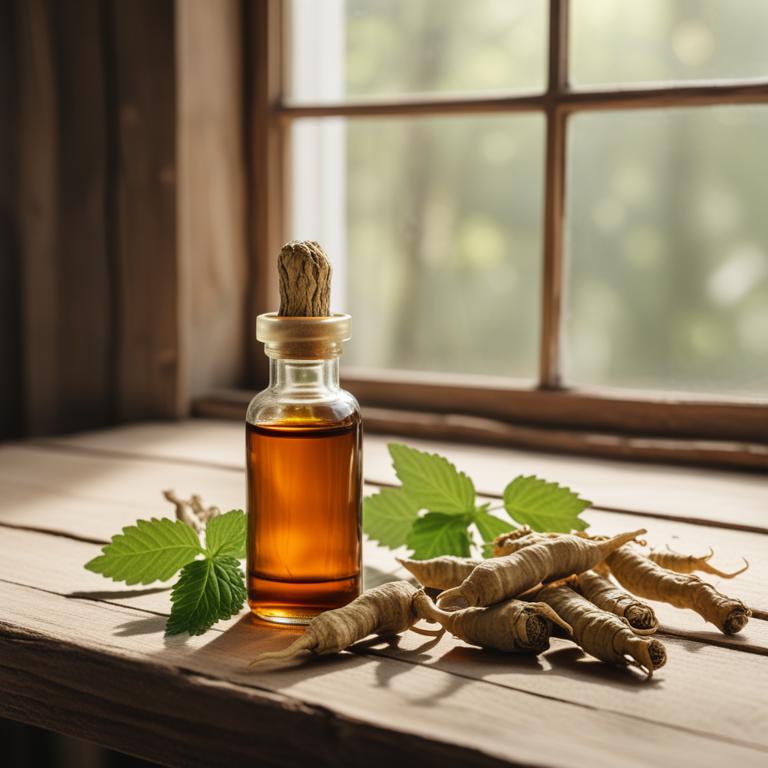
Panax ginseng tinctures have been used to treat fatigue, a common ailment characterized by persistent tiredness and lack of energy.
The properties of this herbal preparation that help to treat fatigue include its adaptogenic and stimulatory effects, which work to improve mental and physical performance.
The bioactive constituents of Panax ginseng tinctures, such as ginsenosides, play a crucial role in treating fatigue by enhancing mitochondrial function, increasing ATP production, and modulating the body's stress response.
The benefits of using Panax ginseng tinctures to treat fatigue include improved endurance, enhanced cognitive function, and reduced fatigue-related symptoms, making it a popular natural remedy for individuals seeking a non-pharmacological approach to managing this condition.
Related Study
According to "Acta physiologica latino americana", Panax ginseng tinctures for fatigue have been shown to provide effective adaptation to fatigue and increase endurance in both male and female mice.
3. Schisandra chinensis tinctures
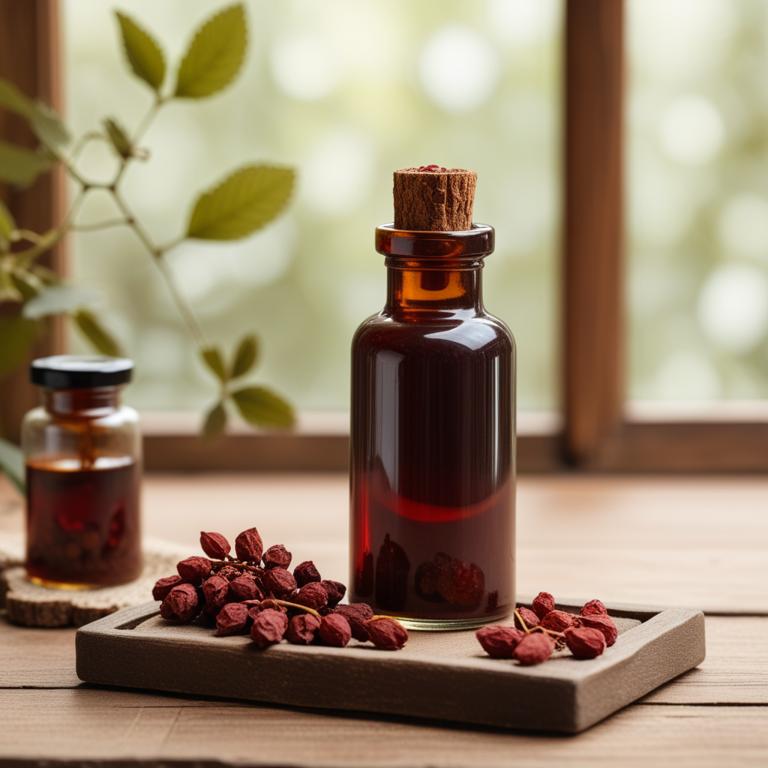
Schisandra chinensis tinctures have been traditionally used to treat fatigue, an ailment characterized by persistent exhaustion and lack of energy.
The antifatigue properties of this herbal preparation are attributed to its ability to improve physical and mental performance by enhancing mitochondrial function, increasing ATP production, and reducing oxidative stress.
Bioactive constituents such as schisandrins, lignans, and polysaccharides in Schisandra chinensis tinctures play a crucial role in treating fatigue by modulating the body's energy metabolism, improving cardiovascular function, and reducing inflammation.
Regular use of Schisandra chinensis tinctures has been shown to provide benefits such as improved endurance, enhanced mental clarity, and reduced fatigue levels, making it a popular natural remedy for individuals suffering from this condition.
Related Study
According to "Phytomedicine : international journal of phytotherapy and phytopharmacology", Schisandra chinensis tinctures have been shown to possess anti-fatigue properties.
4. Astragalus membranaceus tinctures

Astragalus membranaceus tinctures have been traditionally used to treat fatigue, particularly in the context of chronic illness or infection.
This herbal preparation is rich in bioactive constituents such as flavonoids, saponins, and polysaccharides, which possess immunomodulatory and adaptogenic properties that help to mitigate fatigue.
The immunomodulatory effects of Astragalus membranaceus tinctures help to regulate the immune system, while its adaptogenic properties enable the body to adapt to stress and recover from fatigue.
By enhancing immune function and promoting energy production, Astragalus membranaceus tinctures can help to alleviate fatigue and improve overall well-being.
Related Study
According to "Frontiers in pharmacology", Astragalus membranaceus tinctures for fatigue have shown efficacy in improving fatigue, as seen in a 1985 study by Kuroda et al. where Hochuekkito, which contains Astragalus membranaceus, showed efficacy in involuntary weight loss and fatigue in 63% of 162 patients with genitourinary cancer.
5. Panax quinquefolius tinctures
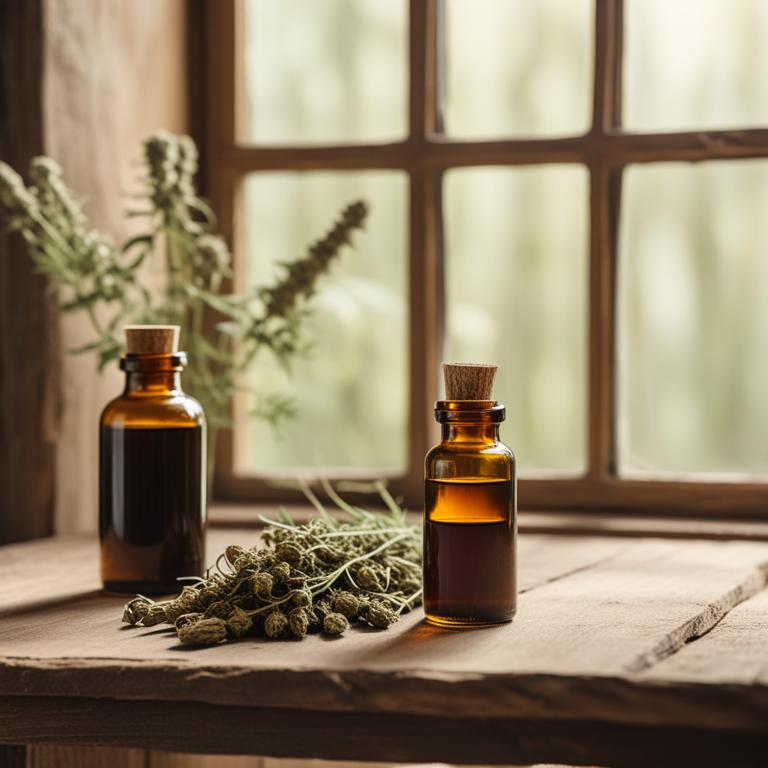
Panax quinquefolius tinctures, derived from the roots of American ginseng, have been used to treat fatigue ailments due to their adaptogenic properties that help the body to adapt to stress and promote balance.
The bioactive constituents, including ginsenosides and eleutherosides, help to increase energy levels and reduce fatigue by enhancing mitochondrial function and improving antioxidant defenses.
By stimulating the production of ATP and reducing oxidative stress, Panax quinquefolius tinctures promote cellular energy and enhance physical performance, making them a popular natural remedy for fatigue and exhaustion.
The benefits of using Panax quinquefolius tinctures to treat fatigue include improved endurance, enhanced mental clarity, and a reduction in the risk of chronic diseases associated with fatigue.
Related Study
According to "Pharmacology, biochemistry, and behavior", Panax quinquefolius tinctures for fatigue may have antifatigue properties, as suggested by the study which showed that Gamisipjundaebo-tang (GSDBT), a formula containing Panax quinquefolius, increased glucose and lactate dehydrogenase levels in the blood serum, and decreased blood urea nitrogen levels, indicating potential benefits in alleviating fatigue.
6. Eleutherococcus senticosus tinctures
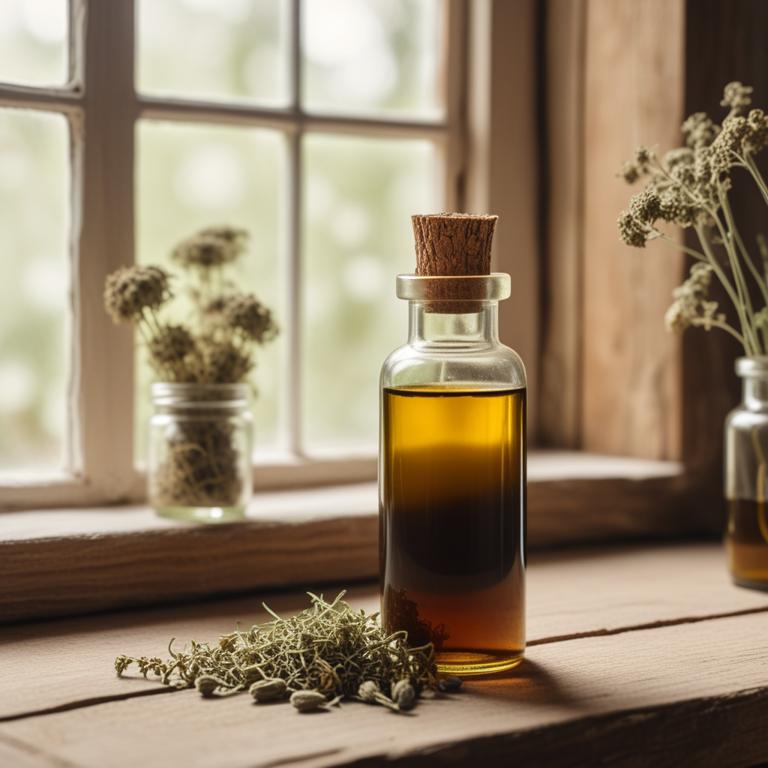
Eleutherococcus senticosus tinctures have been traditionally used to treat fatigue by enhancing the body's adaptogenic response, helping to mitigate the effects of stress and promote overall well-being.
The bioactive constituents present in this herbal preparation, including eleutherosides and other triterpene saponins, contribute to its adaptogenic properties, which aid in regulating the body's energy levels and improving its ability to cope with physical and mental strain.
By modulating the hypothalamic-pituitary-adrenal axis, Eleutherococcus senticosus tinctures help to increase the body's resilience to fatigue, improving its capacity to function optimally even in the face of stress.
Regular use of this herbal preparation has been found to provide benefits such as reduced fatigue, improved mental clarity, and enhanced overall energy levels, making it a popular natural remedy for individuals seeking to combat fatigue and promote vitality.
Related Study
According to "Phytotherapy research : PTR", Eleutherococcus senticosus tinctures for fatigue have been shown to have anti-fatigue effects.
7. Acacia concinna tinctures
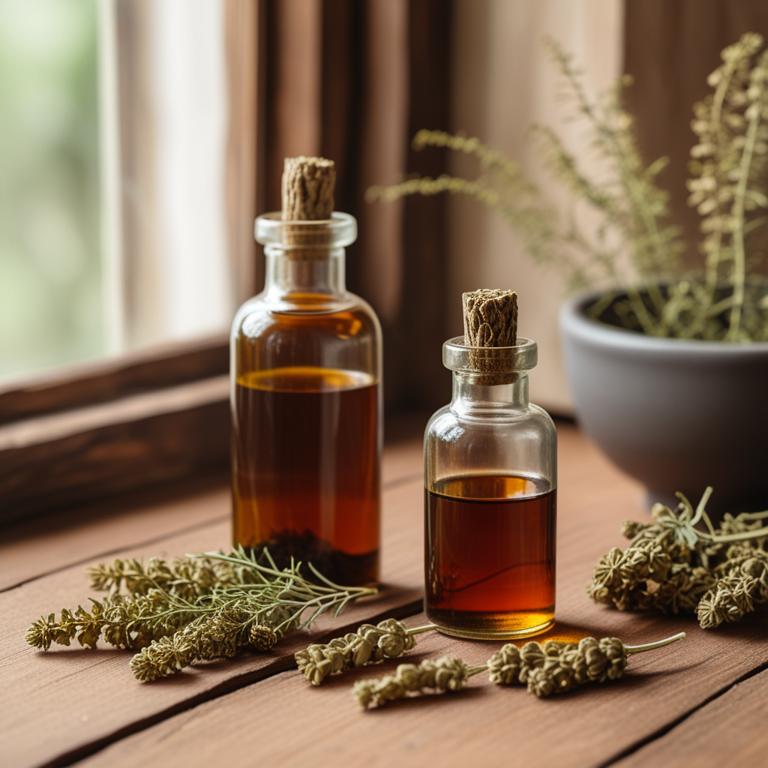
Acacia concinna tinctures are herbal preparations derived from the leaves and pods of the Acacia concinna tree, which have been traditionally used to treat fatigue and exhaustion.
The tinctures exhibit adaptogenic and antioxidant properties, helping to balance the body's energy levels and reduce oxidative stress, thereby alleviating fatigue.
The bioactive constituents of Acacia concinna tinctures, including flavonoids, phenolic acids, and saponins, contribute to their fatigue-reducing effects by improving circulation, reducing inflammation, and enhancing cellular energy production.
By using Acacia concinna tinctures, individuals can experience benefits such as increased energy levels, improved mental clarity, and enhanced overall well-being, making it a valuable natural remedy for managing fatigue.